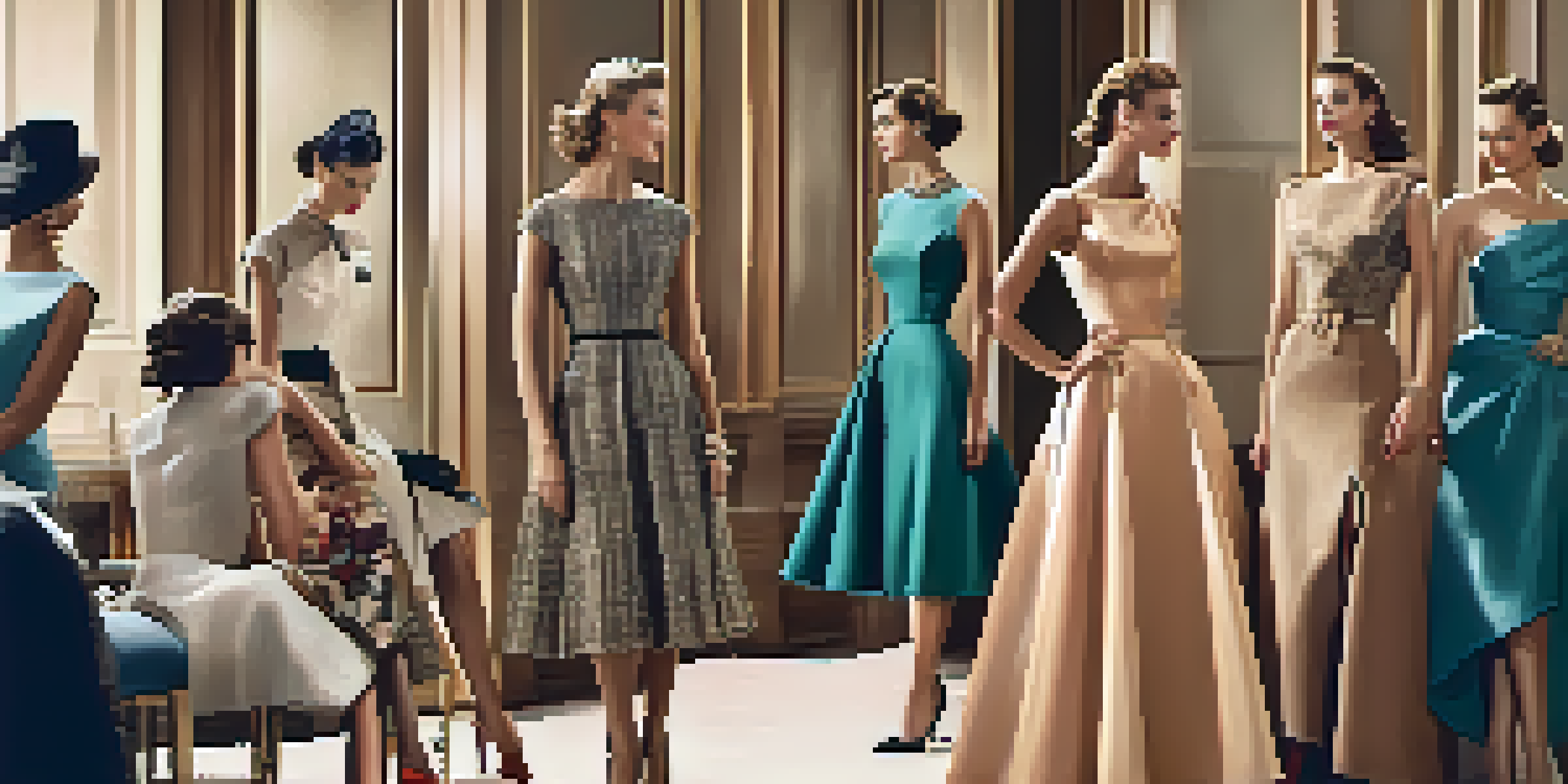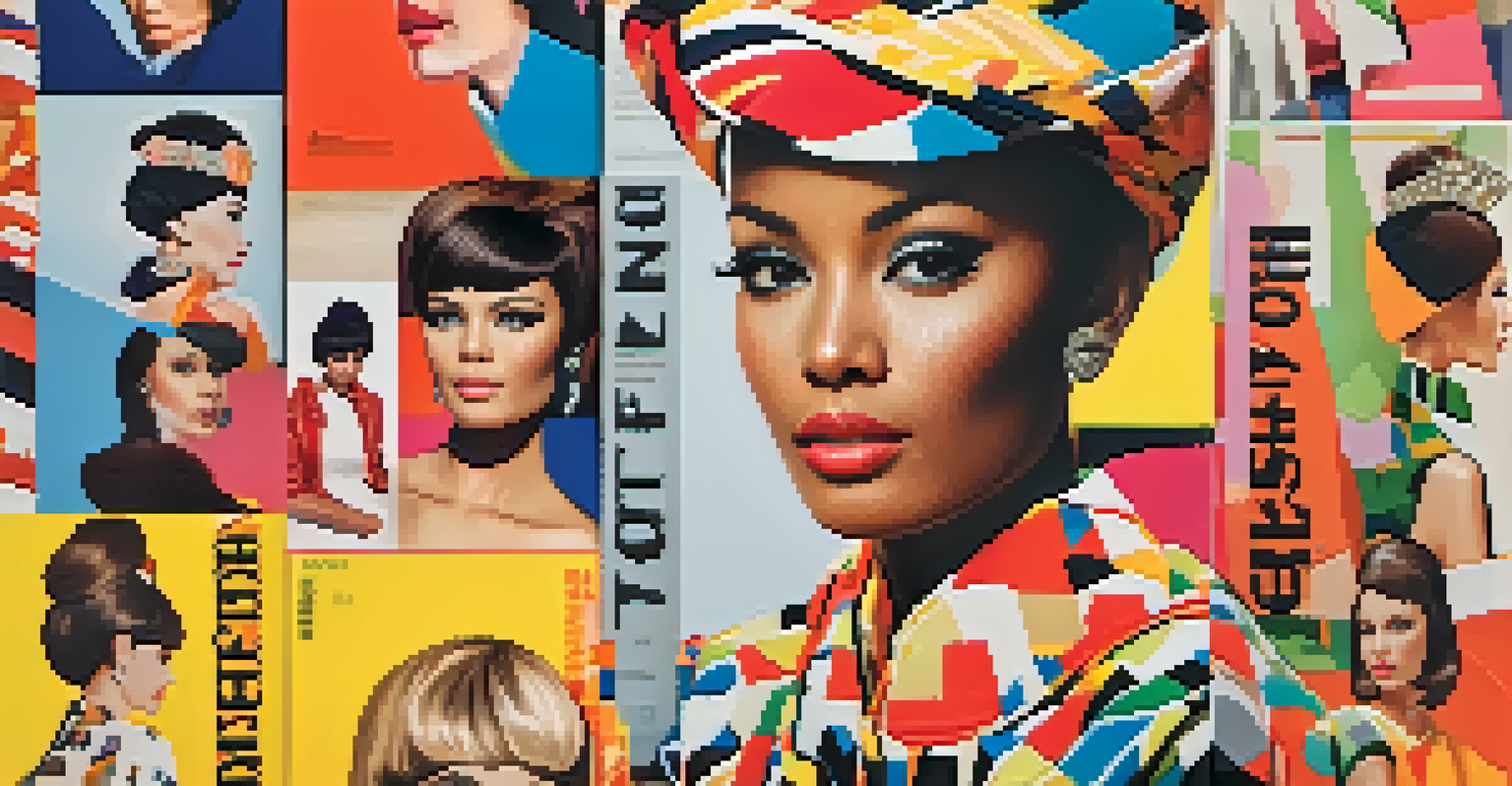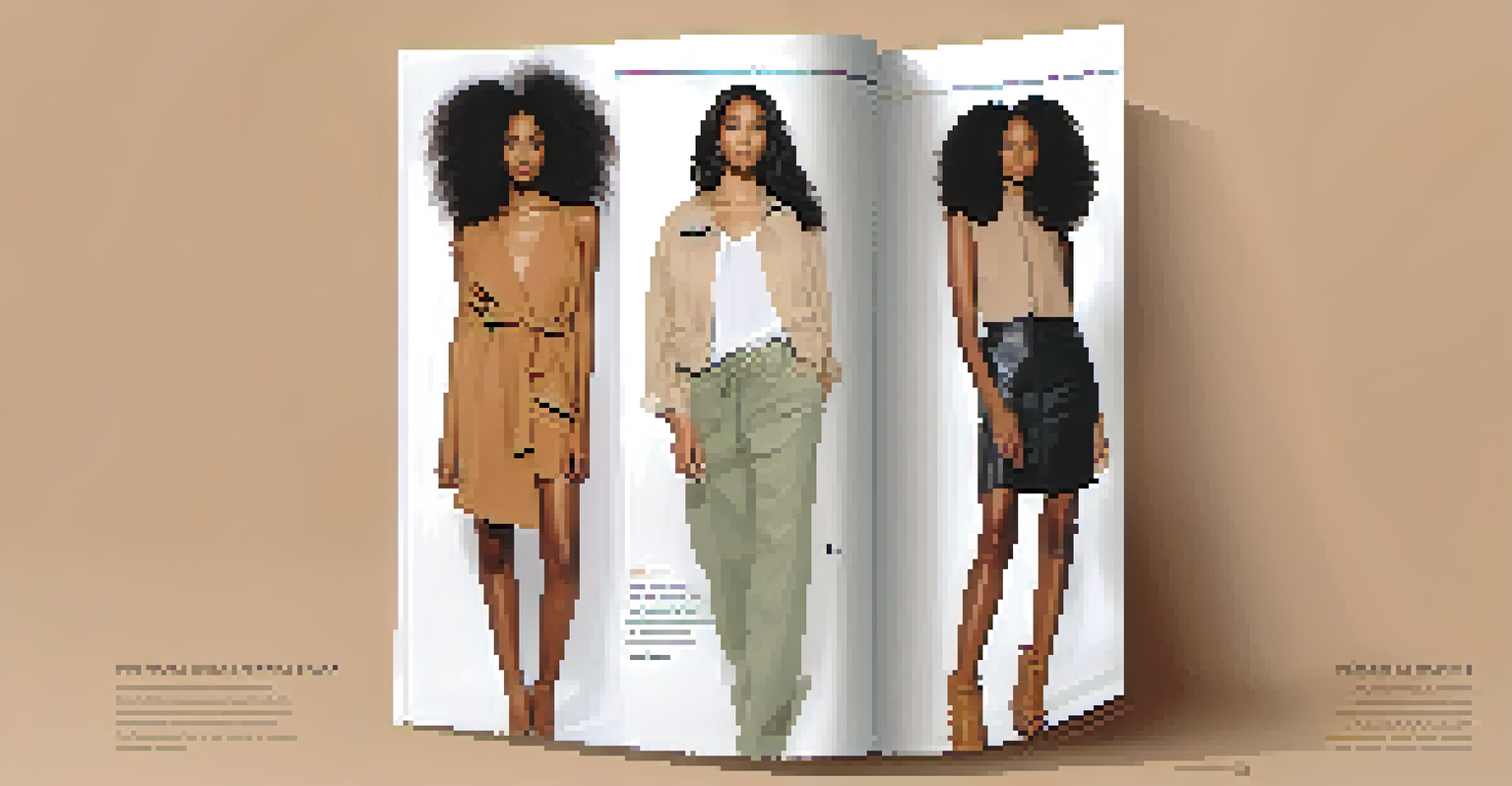Exploring the Evolution of Fashion Magazines Through Decades

The Birth of Fashion Magazines in the 19th Century
Fashion magazines first emerged in the 19th century, primarily catering to the elite. They served as a window into the lives of the wealthy, showcasing their styles and the latest trends. Publications like 'Godey's Lady's Book' not only featured fashion plates but also included literature and etiquette, appealing to the sophisticated reader. This era set the groundwork for magazines to become a staple in women's culture, blending fashion with lifestyle.
Fashion is the armor to survive the reality of everyday life.
As the industrial revolution unfolded, fashion magazines began to democratize style. No longer solely for the affluent, they started reaching a wider audience. The emergence of color printing allowed for more vibrant illustrations, capturing the imagination of readers everywhere. This shift marked the beginning of fashion magazines as influential cultural artifacts rather than mere commodities.
Furthermore, the 19th century paved the way for the rise of iconic figures in fashion journalism. Editors like Emmeline Pankhurst, who championed women's rights, used their platforms to influence not only fashion but also societal norms. This intertwining of fashion and activism would continue to evolve in the decades to come.
The Roaring Twenties: Glamour and Revolution
The 1920s were a transformative time for fashion magazines, coinciding with the flapper movement and a surge in women's rights. Magazines like 'Vogue' and 'Harper's Bazaar' began to embrace more modern styles, reflecting the liberated spirit of the era. The focus shifted from restrictive clothing to more relaxed silhouettes, allowing women to express their newfound freedom. This era's visual storytelling through photography became a hallmark of future publications.

In addition to fashion, these magazines began addressing social issues, intertwining style with lifestyle and politics. The rise of influential designers like Coco Chanel was prominently featured, showcasing how fashion could empower women. The boldness of this decade was not just in the clothing but also in the narratives that challenged societal norms.
Fashion Magazines Evolved Over Time
From elite publications in the 19th century to inclusive platforms in the 2010s, fashion magazines have continuously adapted to reflect societal changes.
Moreover, the introduction of advertising transformed the magazine landscape, creating a lucrative business model. Advertisers recognized the power of fashion magazines to influence consumer behavior, leading to collaborations between brands and publications. This symbiotic relationship laid the groundwork for the modern magazine industry we know today.
The Golden Age of Fashion Magazines in the 1950s
The 1950s marked a golden age for fashion magazines, characterized by a post-war boom and a return to femininity. Magazines like 'Vogue' and 'Elle' showcased glamorous styles, emphasizing elegance and sophistication. Iconic photographers such as Richard Avedon and Irving Penn contributed to the visually stunning layouts that became synonymous with this era. Readers were transported into a world of luxury and aspiration through captivating imagery.
Style is a way to say who you are without having to speak.
This decade also witnessed the rise of the supermodel, with figures like Twiggy and Jean Shrimpton gracing the covers. Their influence extended beyond fashion, shaping beauty standards and popular culture. The magazines began to highlight not just clothing but also lifestyle and beauty tips, making them essential reading for women seeking to embody the ideal image.
Furthermore, the 1950s saw fashion magazines become more accessible, with mass circulation reaching households across America. This democratization of fashion information meant that trends could spread rapidly, allowing readers to participate in the evolving style landscape. As a result, fashion magazines became pivotal in shaping public perception of beauty and femininity.
The 1960s: A Cultural Shift in Fashion Representation
The 1960s brought a cultural revolution that was vividly reflected in fashion magazines. With the rise of youth culture, publications began to feature more diverse styles, embracing bold patterns and vibrant colors. This decade celebrated individuality, with magazines showcasing everything from mod fashion to bohemian styles, reflecting the social changes of the time. It was a period where fashion became a form of self-expression for the younger generation.
Moreover, the advent of the counterculture movement pushed magazines to address social issues like civil rights and feminism. Fashion was no longer just about clothing; it became a commentary on societal norms and expectations. Icons such as Mary Quant and André Courrèges were celebrated for their innovative designs, which challenged conventional aesthetics.
Influence of Cultural Movements
Fashion magazines have intertwined with cultural movements, showcasing how style can reflect and influence social norms and individual identity.
The 1960s also saw the introduction of groundbreaking layouts and editorial styles in magazines. Publications began experimenting with graphic design, using creative typography and collage techniques to engage readers visually. This artistic approach not only captivated audiences but also paved the way for future innovations in fashion journalism.
The 1970s: Embracing Diversity and Individualism
The 1970s marked a significant shift in fashion magazines, embracing diversity and individualism like never before. As the feminist movement gained momentum, magazines began to feature a broader range of body types, ethnicities, and styles. This inclusivity reflected a changing society that celebrated differences, setting the stage for future representations in fashion. The era's eclectic styles, from disco to punk, were embraced, allowing readers to explore their unique identities.
Additionally, the 70s saw the rise of influential fashion icons like Cher and Diana Ross, who challenged traditional beauty standards. Magazines highlighted their unique styles and personalities, showcasing how fashion could be a powerful tool for self-expression. This focus on individuality resonated with readers, encouraging them to explore and embrace their personal style.
Furthermore, the explosion of music culture influenced fashion magazines significantly. Collaborations with musicians and artists became commonplace, blending fashion with music and lifestyle. This fusion not only expanded the magazine's audience but also solidified its position as a key player in popular culture.
The 1980s: The Era of Excess and Glamour
The 1980s were characterized by bold styles and extravagant fashion, and magazines eagerly embraced this trend. From shoulder pads to neon colors, the aesthetics of the decade were reflected in the pages of publications like 'Vogue' and 'Glamour.' This era celebrated excess, with fashion becoming an expression of power and confidence. The rise of supermodels like Naomi Campbell and Cindy Crawford further amplified the glamour associated with fashion magazines.
Moreover, the 80s introduced the concept of the 'celebrity' model, where the boundaries between fashion and entertainment began to blur. Magazines started featuring not just models but also actresses and musicians, creating a new standard for beauty and influence. This shift allowed fashion magazines to attract a broader audience, merging the worlds of fashion and pop culture.
Digital Transformation of Fashion Media
The rise of the internet and social media has reshaped fashion magazines, fostering a more interactive and diverse landscape for fashion content.
Additionally, the increased focus on advertising during this decade transformed the magazine industry. Advertisers recognized the potential of fashion magazines to shape consumer behavior, leading to high-profile campaigns and collaborations. This relationship between fashion and marketing solidified the magazine's role as a powerful influencer in the fashion world.
The 1990s to 2000s: The Digital Revolution Begins
As we moved into the 1990s and early 2000s, the landscape of fashion magazines began to change drastically with the advent of the internet. While magazines like 'W' and 'Vogue' still held sway, the rise of digital platforms started to capture the attention of readers. Online fashion blogs and websites began to emerge, challenging traditional publications by offering immediate and diverse content. This shift marked the beginning of a digital revolution that would reshape the fashion media landscape.
Moreover, the 90s saw the rise of minimalism, with magazines showcasing a more understated aesthetic. Designers like Calvin Klein and Jil Sander became synonymous with this trend, which was reflected in the editorial choices of the time. Fashion magazines began to shift their focus toward lifestyle and culture, creating a more holistic approach to fashion journalism.

Additionally, as the millennium approached, magazines began experimenting with multimedia content, incorporating CD-ROMs and later online features. This innovation allowed readers to engage with fashion in new ways, from interactive lookbooks to video content. The blending of print and digital mediums set the stage for the future of fashion media.
The 2010s and Beyond: Sustainability and Inclusivity Take Center Stage
The 2010s marked a pivotal period for fashion magazines, with a significant emphasis on sustainability and inclusivity. As the fashion industry faced criticism for its environmental impact, magazines began highlighting eco-friendly brands and ethical practices. Publications like 'Teen Vogue' and 'Vogue' took bold stances, addressing climate change and promoting sustainable fashion. This shift not only educated readers but also encouraged conscious consumerism.
Moreover, inclusivity became a central theme in fashion magazines, with a broader representation of body types, ethnicities, and gender identities. The push for diversity transformed the editorial landscape, allowing readers to see themselves reflected in the pages of their favorite publications. This newfound focus resonated with audiences, reinforcing the idea that fashion should be accessible to all.
Evolution of Fashion Magazines
Fashion magazines evolved from exclusive publications for the elite to influential cultural artifacts that democratized style.
Additionally, the rise of social media significantly impacted how fashion magazines operated. Platforms like Instagram and TikTok became avenues for brands and influencers to share their styles, often bypassing traditional media altogether. This democratization of fashion content has led to a more dynamic and interactive relationship between magazines and their audiences, shaping the future of fashion journalism.